In Winterberg it is wet and cold, gray clouds hang over the cap. Up here, on the approximately 770 meter high mountain of the Rothaargebirge, is the starting area of the bob run. A few tourists are shown around there to show them the fascination of this extremely fast sport. A few meters away, the youngsters train in the start-up hall.
Federal base trainer Andreas Neagu gathered five “girls” there: Pilot Celine Harms with four brake women. In different combinations, they accelerate a sled in pairs or sometimes alone, which doesn't look like a bob here on the facility. Rather, it is a bare steel structure that runs on rails with small rollers and can be equipped with different discs to simulate the competition weight of the actual bobsled.
The young women are between 17 and 22 years old. Three of them already have experience in the ice channel. Only Lisa Marie Löhr and Pauline Brune have never sat in a real bob. Löhr is actually an epee fencer, Brune comes from the biathlon. Lateral entrants like these two are nothing unusual for the sport of bobsleigh. On the contrary. It is at the core of finding talent to look for suitable candidates in other sports. Finally, one should be at least 14 years old to start the sport.
An age when Zoe Kimberly Lache sat in a bob for the first time. Until then, she had mainly done athletics. "The first time I rode in a four-man bobsleigh," says the now 17-year-old. She was placed in a bobsled with others behind an experienced pilot, pushed briefly and then off we went. Lache was immediately amazed by the speed and adrenaline rushing through her body. "It's a feeling like no other. A roller coaster ride is nothing compared to that,” she says, beaming
Jill Kemp also comes from athletics. For her, the path to bobsleigh ran in the family. "Even my father and brother did it," she says. When she saw international races in Winterberg at the track in 2020, she was sure: "I want that too!" She tried it out and stayed. Now she is one of just around 200 athletes nationwide who practice this sport.
In North Rhine-Westphalia, around 30 athletes are currently crazy or brave enough to race through narrow curves into the valley at 120 kilometers per hour or more on four narrow runners. Sooner or later they all come into contact with base coach Andreas Neagu. In Winterberg he looks after the youngsters and the Olympic starters alike. His duties also include sightings in schools and clubs, which have been difficult in the past two years due to the pandemic. "The classic career changer comes from athletics," he says. But speed skaters and weightlifters have also been trained to be very good bobsleigh athletes, adds Neagu.
Pilot Harms and brakewoman Kemp get ready for the next round in the push-off hall. Helmet on, hands on the handles, build up pre-tension. "Okay," says Harms. "Stand," replies Kemp. After Harms says "Ready!", Kemp calls out an "And" and then things get going. With quick steps, they push the device almost 40 meters across the track, jump up and let themselves be slowed down again by a hill on the other side. In addition to strength and sprint training, push-up training is an essential part of preparing for the winter season.
"We also take care of our material," says Harms. The 19-year-old is the most experienced here. At the 2020 Youth Olympic Games, she won bronze in monobob without a brake. Now she is preparing for the new season in two-man bobsleigh. Her goal: "I want to qualify for the European Cup and get down the lanes properly," she says. Harms has been in bobsleigh for almost five years, before that she did gymnastics, athletics and guard dance, and she was discovered for skeleton through a school screening. The athletes ride face down on a sled, head first across the ice rink. "I knew the speed before I got on a bobsleigh for the first time," she says.
For some athletes, the first is also the last ride in the ice channel. “Some athletes feel really nauseous after the first ride. They then say: never again,” said coach Neagu. But he doesn't always have to look for the talents, sometimes they come all by themselves. Just like Lisa Marie Loehr. The 22-year-old actually trains at the fencing base in Bonn. Now she would like to swap fencing for the ice rink, at least temporarily. And is looking forward to her first ride this winter.
Pauline Brune will also confide in her pilot for the first time. "I expect to be shaken up badly," says the former biathlete. "I trust Celine, she'll get us down there." Then she puts on her helmet and does the next push test with her pilot. Again the ritual: Ok - it's done - done - and! Then it's off. The athletes' spikes are still digging into the tartan track. But soon it's time to get on the ice. The winter can come.

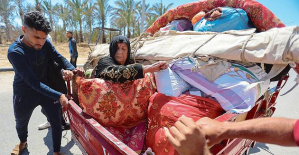 Israel-Hamas war: Gaza between hope of truce and fear of Israeli offensive in the South
Israel-Hamas war: Gaza between hope of truce and fear of Israeli offensive in the South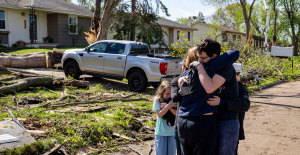 “Mom, Dad, please don’t die”: in the United States, a nine-year-old child saves the lives of his parents injured in a tornado
“Mom, Dad, please don’t die”: in the United States, a nine-year-old child saves the lives of his parents injured in a tornado War in Ukraine: Putin orders nuclear exercises in response to Macron and “Western leaders”
War in Ukraine: Putin orders nuclear exercises in response to Macron and “Western leaders”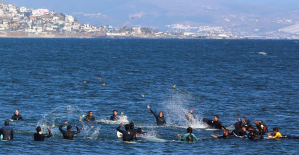 Mexico: the last moments of surfers found in a well, killed with a bullet to the head
Mexico: the last moments of surfers found in a well, killed with a bullet to the head A baby whose mother smoked during pregnancy will age more quickly
A baby whose mother smoked during pregnancy will age more quickly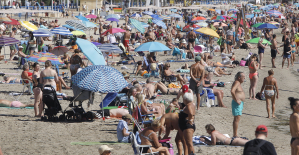 The euro zone economy grows in April at its best pace in almost a year but inflationary pressure increases
The euro zone economy grows in April at its best pace in almost a year but inflationary pressure increases Children born thanks to PMA do not have more cancers than others
Children born thanks to PMA do not have more cancers than others Breast cancer: less than one in two French women follow screening recommendations
Breast cancer: less than one in two French women follow screening recommendations “A potential environmental disaster”: Paris town hall opposes an oil drilling project in Seine-et-Marne
“A potential environmental disaster”: Paris town hall opposes an oil drilling project in Seine-et-Marne The governor of the Banque de France pleads for the development of French and European AI
The governor of the Banque de France pleads for the development of French and European AI Clariane (ex-Korian) announces a sale of its home hospitalization activities
Clariane (ex-Korian) announces a sale of its home hospitalization activities To everyone's surprise, the Hades 2 event video game is released in early access
To everyone's surprise, the Hades 2 event video game is released in early access The Origin of the World, exhibited at the Center Pompidou Metz, target of an “artistic performance”
The Origin of the World, exhibited at the Center Pompidou Metz, target of an “artistic performance”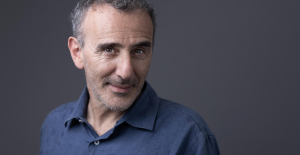 Threatened with death for having insulted the mobilized pro-Palestinian students, Élie Semoun files a complaint
Threatened with death for having insulted the mobilized pro-Palestinian students, Élie Semoun files a complaint Vienna, Paris, Milan celebrate the 200th anniversary of Beethoven's 9th Symphony
Vienna, Paris, Milan celebrate the 200th anniversary of Beethoven's 9th Symphony Cannes Film Festival: call for strike one week before opening
Cannes Film Festival: call for strike one week before opening Omoda 7, another Chinese car that could be manufactured in Spain
Omoda 7, another Chinese car that could be manufactured in Spain BYD chooses CA Auto Bank as financial partner in Spain
BYD chooses CA Auto Bank as financial partner in Spain Tesla and Baidu sign key agreement to boost development of autonomous driving
Tesla and Baidu sign key agreement to boost development of autonomous driving Skoda Kodiaq 2024: a 'beast' plug-in hybrid SUV
Skoda Kodiaq 2024: a 'beast' plug-in hybrid SUV The home mortgage firm rises 3.8% in February and the average interest moderates to 3.33%
The home mortgage firm rises 3.8% in February and the average interest moderates to 3.33% This is how housing prices have changed in Spain in the last decade
This is how housing prices have changed in Spain in the last decade The home mortgage firm drops 10% in January and interest soars to 3.46%
The home mortgage firm drops 10% in January and interest soars to 3.46% The jewel of the Rocío de Nagüeles urbanization: a dream villa in Marbella
The jewel of the Rocío de Nagüeles urbanization: a dream villa in Marbella Europeans: David Lisnard expresses his “essential and vital” support for François-Xavier Bellamy
Europeans: David Lisnard expresses his “essential and vital” support for François-Xavier Bellamy Facing Jordan Bardella, the popularity match turns to Gabriel Attal’s advantage
Facing Jordan Bardella, the popularity match turns to Gabriel Attal’s advantage Europeans: a senior official on the National Rally list
Europeans: a senior official on the National Rally list Blockade of Sciences Po: the right denounces a “drift”, the government charges the rebels
Blockade of Sciences Po: the right denounces a “drift”, the government charges the rebels These French cities that will boycott the World Cup in Qatar
These French cities that will boycott the World Cup in Qatar Foot: Italian football protests against a government project which aims to monitor club finances
Foot: Italian football protests against a government project which aims to monitor club finances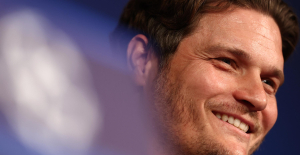 Champions League: “We are ready for anything,” warns Edin Terzic before PSG-Dortmund
Champions League: “We are ready for anything,” warns Edin Terzic before PSG-Dortmund Premier League: David Moyes to leave West Ham at end of season
Premier League: David Moyes to leave West Ham at end of season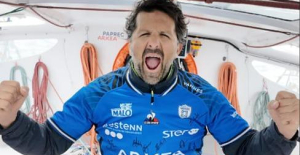 Transat CIC: Yoann Richomme winner in the wake of Tabarly, Poupon, Peyron, Desjoyeaux...
Transat CIC: Yoann Richomme winner in the wake of Tabarly, Poupon, Peyron, Desjoyeaux...


















